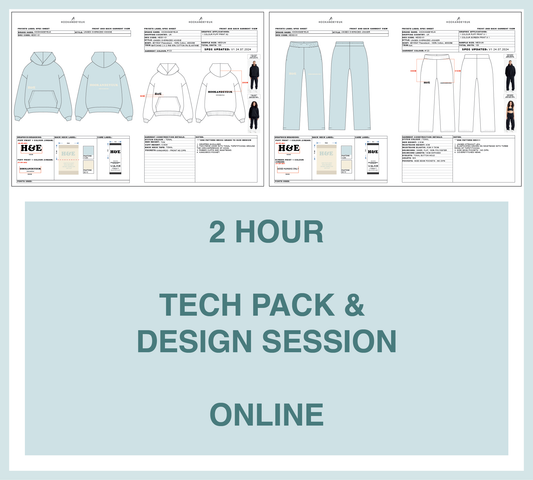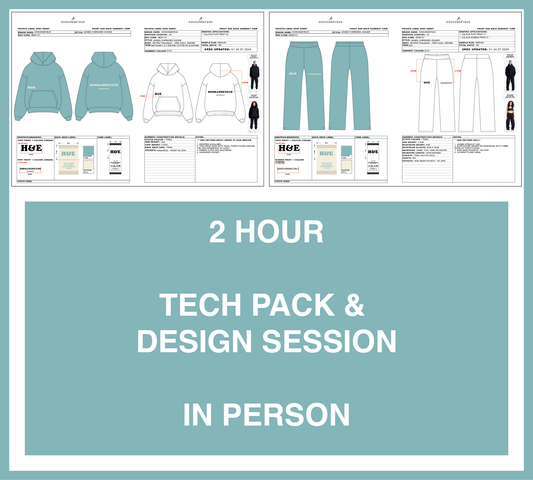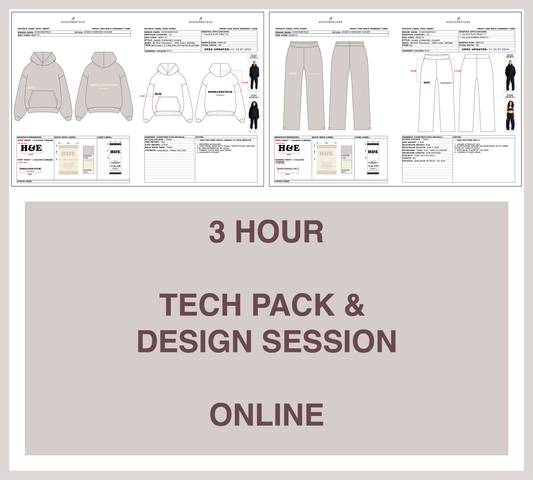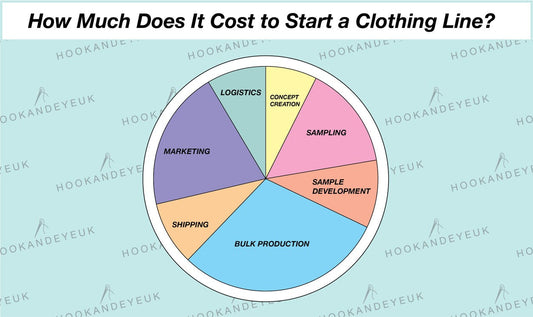One t-shirt design, two different fabrics: spot the difference!
For this post, we've compared two t-shirts from Fear of God Essentials to show the MASSIVE impact that different fabrics can have on your clothing. And because we love you, we'll also show you how to make sure you're choosing the right fabrics for your clothing brand.
We really can’t overstate the importance of fabric selection when designing your clothing collections. It is absolutely crucial, as the choice of fabric affects not only how a garment feels, but how it looks, sits and performs. If you watch the video below, we'll show you just how big that difference can be.
The fabric experiment: let's see the difference
There are lots of factors that make up a fabric, and all of them contribute to it’s the finished product; yarn composition, weave or knit type, weight and fabric treatments.
Imagine you have a simple T-shirt design. You could take exactly the same garment base shape, size and fit, and change nothing but the fabric, and end up with two noticeably different results...
So just for you, we've done exactly that! Hook and Eye’s owner, Joss, purchased two long sleeved tees from Fear Of God Essentials a couple of months apart. The style is identical, but when she tried them on we noticed a big difference! Watch the video below to find out what!
So, what's going on?
These tees are both 100% Cotton jersey so, why don't they look the same? As mentioned in the video – it’s just the weight of the fabric that has changed – and you can see what a visible difference it makes.
Why fabric weight matters for clothing
Fabric weight is measured in GSM (grams per square metre) and refers to how dense and how heavy the fabric is. To state the obvious, lightweight fabrics will sit lighter on your body, and tend to have more drape, meaning they flow more and sit in softer folds. A heavier fabric will often be stiffer and create crisper folds.
Check out the pictures below to see the difference. The picture on the left is the lighter fabric - look at the drape on the sleeve; it falls softly down to the wrist and then pools in soft folds. There is drape in the body that folds around the body loosely.

But, hold your horses. Weight isn't the only thing that has an impact on how a fabric sits. There are a lot of factors that go into a fabric's "genetic makeup" that affect how it looks, feels and behaves. Think of it as their fabric DNA. Let’s break down a few key factors below that typically affect the outcome of a fabric (and therefore a garment).
Factors that can affect how a fabric drapes or feels
- Fibre content. This refers to the composition of the fabric. All of your clothes will have this on the label, it will look something like ‘100% Cotton’, or ‘75% Nylon, 25% Spandex’, for example. The type of fibres used massively affects how a fabric feels. For example, a jersey fabric with a high modal content will have a soft, silky feel and a soft drape. A fabric with a high polyester content will often have a more synthetic, shiny feel to it.

- Weight. As we’ve already discussed above, fabric weight makes a huge difference. As a general rule, lighter fabrics have more drape and the heavier fabrics go, the more stiff they become. The weight of a fabric also affects the outcome of certain graphic applications you might use on your clothing; you need to have a substantial fabric weight to be able to support heavier applications such as applique and embroidery for example.
- Fabric construction. This refers to how fibres have been treated and put together to form fabric. Fibres are either knitted or woven together, and a number of different variables can affect the outcome. An example is ringspun cotton, a popular choice for t-shirts. This is when the cotton fibres have gone through a spinning process prior to weaving that makes them finer and softer, resulting in an end fabric that is stronger and has a softer feel.
- Washes. Fabric can be ‘aged’ by being treated with certain solutions and techniques to give them a soft, worn-in feel. Both Joah Brown and Aviator Nation are examples of brands that do this, to give a vintage feel to some of their garments such as sweatshirts and joggers. This makes the fabric softer and more pliable – it is literally manually ageing the fabric so it’s as though you’ve had the garment for a long time and it looks and feels ‘worn’. Jeans and other denim products are also often washed to soften them up and make them more comfortable to wear.

How do I know what fabric to choose for my clothing?
Choosing fabrics is a very tactile experience – there’s so much that can only be truly understood by FEELING different fabrics. So, a key tip is to literally feel your clothes, look at the composition and get more familiar with different fabric types and weights. Check out our blog post on clothing fabrics and their uses for a useful guide to the different fabric types!
When building your clothing collection, try and feel fabrics in person before selecting them (if you can), or get detailed descriptions, pictures and recommendations from a clothing designer or manufacturer that has experience with fabrics. If you have a garment to hand whose fabric you like, send photos or the item itself to convey what you’re looking for in a fabric.
At Hook and Eye UK we have an extensive fabric library with hundreds of premium quality fabrics. Our design and development team will always recommend options best suited to your designs. Click here to see a selection of our favourite fabrics.
In Conclusion: Why Fabric Matters for your Clothing
Fabric choice is imperative to getting the look and feel you want for your clothing. There are several factors that contribute to a fabric's ‘DNA’ and make it what it is, such as fabric weight, construction, fibre content and treatment.
From the experiment above, you can see the difference that changing just one aspect of the fabric makes to the overall look, feel and shape of a garment. Understanding these different factors will provide a great foundation for you when selecting fabrics for your own clothing collection!
Want to discuss fabrics for your clothing collection? Book a tech pack and design session here!
Love, Bethany H&E xx
P.s We're here for you if you have questions head to our contact page here.








